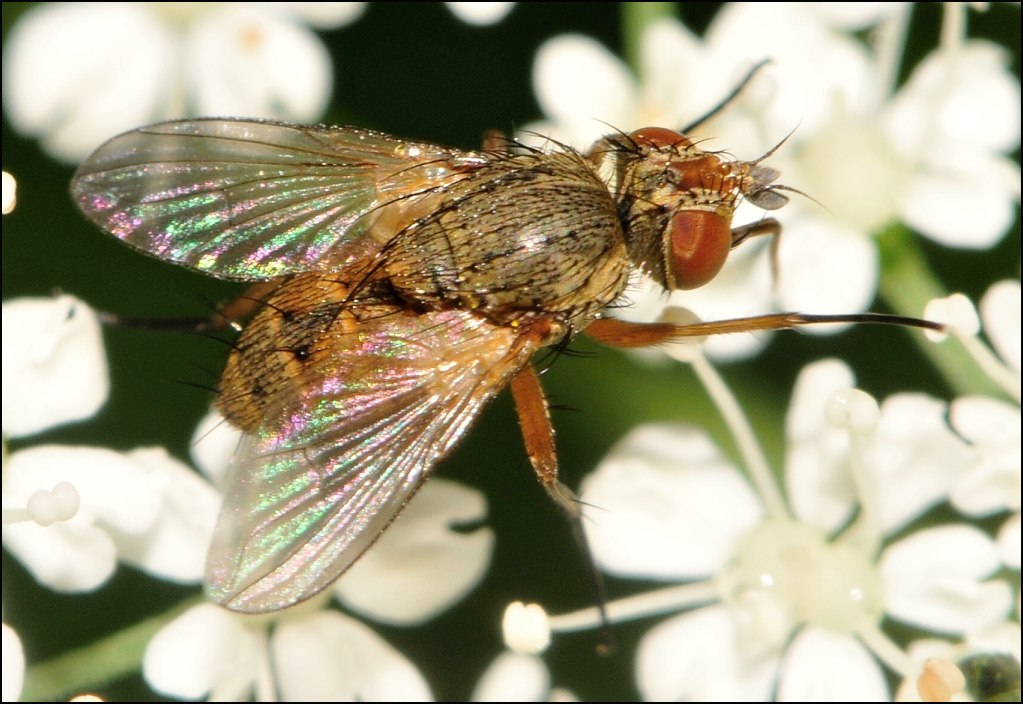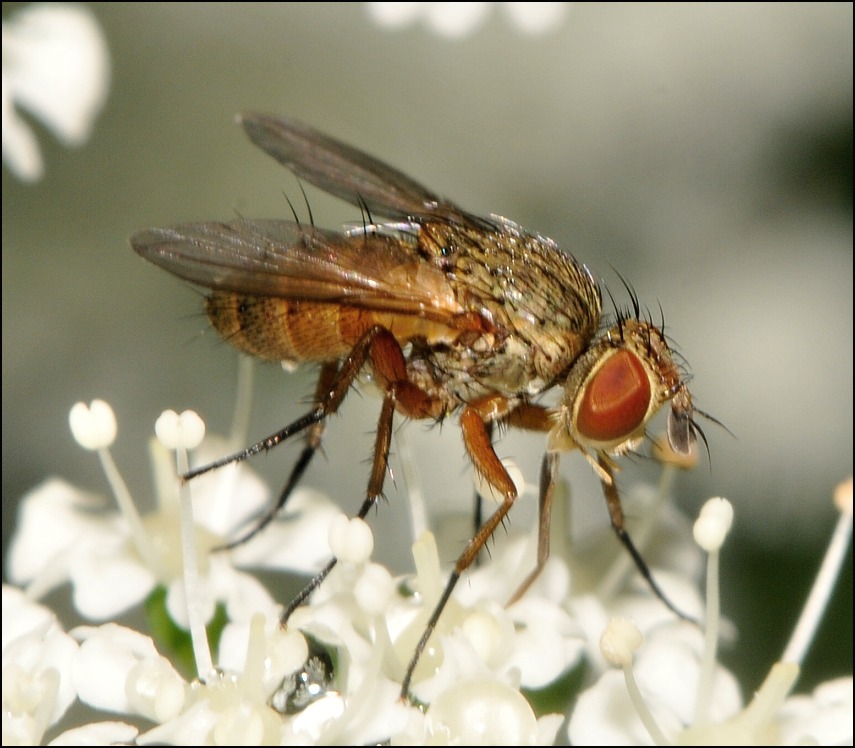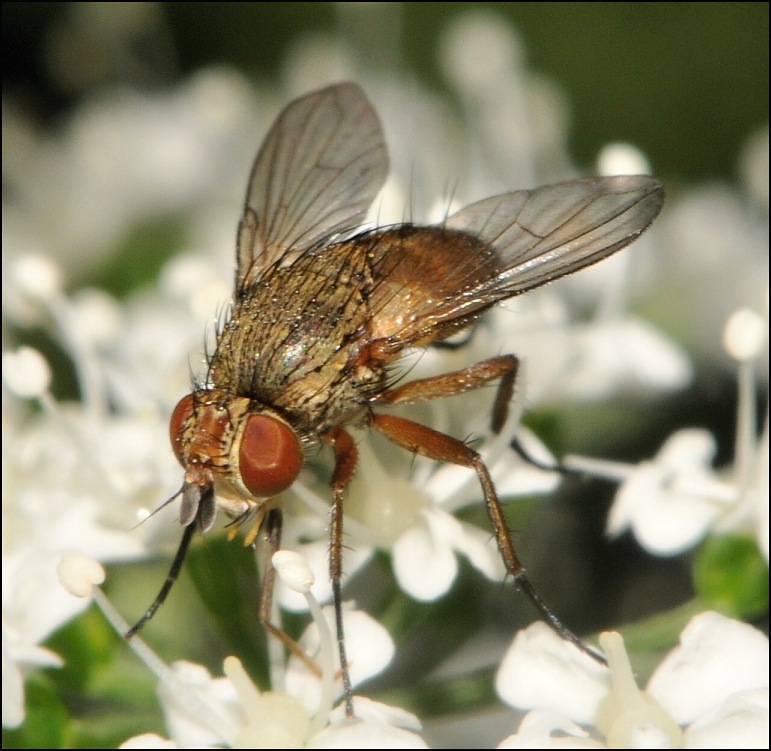Diptera.info :: Identification queries :: Diptera (adults)
Who is here? 1 guest(s)
|
Siphona geniculata? (Siphona cf. geniculata(female)
|
|
| Mucha Fero |
Posted on 30-01-2012 06:39
|
|
Member Location: Posts: 8225 Joined: 27.09.10 |
Siphona geniculata(female) is correct? Region Malá Fatra Terchová about 700 m above sea level. Thank you very much for your help. I made a photo of 02.06.2011.
Mucha Fero attached the following image:  [184.01Kb] Edited by Mucha Fero on 30-01-2012 11:44 |
|
|
|
| Mucha Fero |
Posted on 30-01-2012 06:40
|
|
Member Location: Posts: 8225 Joined: 27.09.10 |
[quote]Mucha Fero wrote:
Mucha Fero attached the following image:  [188.4Kb] |
|
|
|
| Mucha Fero |
Posted on 30-01-2012 06:40
|
|
Member Location: Posts: 8225 Joined: 27.09.10 |
Mucha Fero wrote:
[quote]Mucha Fero wrote: Mucha Fero attached the following image:  [179.59Kb] |
|
|
|
| Mucha Fero |
Posted on 30-01-2012 06:40
|
|
Member Location: Posts: 8225 Joined: 27.09.10 |
Mucha Fero wrote:
Mucha Fero wrote: [quote]Mucha Fero wrote: Mucha Fero attached the following image:  [187.41Kb] |
|
|
|
| rvanderweele |
Posted on 30-01-2012 09:25
|
|
Member Location: Zoelmond, the Netherlands Posts: 1984 Joined: 01.11.06 |
I think it is pretty unlikely to say which species. Only possible, as far as I know, by studying genitalia
ruud van der weele rvanderweele@gmail.com |
|
|
|
| ChrisR |
Posted on 30-01-2012 11:11
|
|
Administrator Location: Reading, England Posts: 7699 Joined: 12.07.04 |
It is not conclusive really - Siphona yes ... maybe geniculata ... but cannot rule-out the other species with T1+2 median marginals so we cannot be sure. @Ruud ... in Siphona the male genitalia are annoyingly inconclusive too. The books claim that the tip of the distiphallus provides some help but workers I have chatted with say that it is very difficult to prepare them and they are far less definitive than you might hope. They are just a genus with many very close species with features that regularly overlap, making them a real nightmare 
Manager of the UK Species Inventory in the Angela Marmont Centre for UK Biodiversity at the Natural History Museum, London. |
| rvanderweele |
Posted on 30-01-2012 11:39
|
|
Member Location: Zoelmond, the Netherlands Posts: 1984 Joined: 01.11.06 |
Ah, I see it is even better! I know that people with a big interest in Tachinidae, tend to turn their head as soon as they see a sweet Siphona! ;-)
ruud van der weele rvanderweele@gmail.com |
|
|
|
| Mucha Fero |
Posted on 30-01-2012 11:45
|
|
Member Location: Posts: 8225 Joined: 27.09.10 |
rvanderweele wrote: Ah, I see it is even better! I know that people with a big interest in Tachinidae, tend to turn their head as soon as they see a sweet Siphona! ;-) Thank you very much. |
|
|
|
| Mucha Fero |
Posted on 30-01-2012 11:45
|
|
Member Location: Posts: 8225 Joined: 27.09.10 |
ChrisR wrote: It is not conclusive really - Siphona yes ... maybe geniculata ... but cannot rule-out the other species with T1+2 median marginals so we cannot be sure. @Ruud ... in Siphona the male genitalia are annoyingly inconclusive too. The books claim that the tip of the distiphallus provides some help but workers I have chatted with say that it is very difficult to prepare them and they are far less definitive than you might hope. They are just a genus with many very close species with features that regularly overlap, making them a real nightmare  Chris thank you very much. |
|
|
|
| ChrisR |
Posted on 30-01-2012 13:11
|
|
Administrator Location: Reading, England Posts: 7699 Joined: 12.07.04 |
rvanderweele wrote: Ah, I see it is even better! I know that people with a big interest in Tachinidae, tend to turn their head as soon as they see a sweet Siphona! ;-) Yeah, it's amazing how many Siphona just simply "escape" from my net ... or never even get seen  It doesn't help that here the commonest species by far (geniculata) dominates the fauna so massively that you are discouraged to even try catching them because you end up with such huge numbers of 1 species and a mere handful of the others. Most Siphona are incredibly rare here. I usually sample a few from each site but I only ever get geniculata (95%), cristata (just a few), and one or two maculata, if I am very lucky It doesn't help that here the commonest species by far (geniculata) dominates the fauna so massively that you are discouraged to even try catching them because you end up with such huge numbers of 1 species and a mere handful of the others. Most Siphona are incredibly rare here. I usually sample a few from each site but I only ever get geniculata (95%), cristata (just a few), and one or two maculata, if I am very lucky  Thanks to my European friends though I have seen plenty of the Siphona species now and I am fairly confident with most of them. There are a few that I simply cannot get my head around but I am told that this is perfectly normal for Siphona! 
Edited by ChrisR on 30-01-2012 13:14 Manager of the UK Species Inventory in the Angela Marmont Centre for UK Biodiversity at the Natural History Museum, London. |
| Mark-uk |
Posted on 30-01-2012 15:49
|
|
Member Location: UK - Hampshire Posts: 792 Joined: 01.02.10 |
Chris Is Stig Andersen's book usefule in working Siphona ? or is Belshaw good enough? Mark |
|
|
|
| ChrisR |
Posted on 30-01-2012 18:10
|
|
Administrator Location: Reading, England Posts: 7699 Joined: 12.07.04 |
I always try to use Andersen but it is a much more confusing key and I do tend to be identifying European material (where there are more species and where the "rarities" are commoner). For the UK Belshaw's is simpler and it does work (if you ignore the fact that it claims that S.cristata can't have T1+2 median marginals, which it can, rarely) but I feel that the simplicity might lead to problems where aberrant (or non-standard) specimens run to the wrong species. If your specimen runs comfortably in Belshaw and it "feels" OK then go for it - but if you have anything a bit marginal then try it in Andersen for a definitive answer ... remembering that "definitive" in terms of Siphona will probably still leave you feeling less confident than just about any other tachinid genus  I have raised concerns with Theo and with Peter Tschorsnig but they rate Belshaw's key quite highly, so it isn't bad and I am not planning to change it drastically in the revamped RES Handbook we are putting together. I am just going to correct that obvious error and add in more secondary/confirmatory features that Andersen talks about 
Manager of the UK Species Inventory in the Angela Marmont Centre for UK Biodiversity at the Natural History Museum, London. |
| Jason G |
Posted on 30-01-2012 18:16
|
|
Member Location: London UK Posts: 136 Joined: 22.12.08 |
Yes - Anderson's book on Siphonini is a good one, apparently. I know a great entomologist who's confidently done 3 species. I believe it requires dissection down to actually removing the aedeagus (for critical certainty of suspect specimens), rather than the Anthomyiidae way of, for the most part, just opening-up the genital capsule and letting it 'all hang out' as it were (and as I do). Edited by Jason G on 30-01-2012 19:38 London's Insects http://londoninve...hostia.com |
|
|
|
| Mark-uk |
Posted on 30-01-2012 19:27
|
|
Member Location: UK - Hampshire Posts: 792 Joined: 01.02.10 |
Thanks - I will consider it next time I have £75.00 spare! |
|
|
|
| Jump to Forum: |















